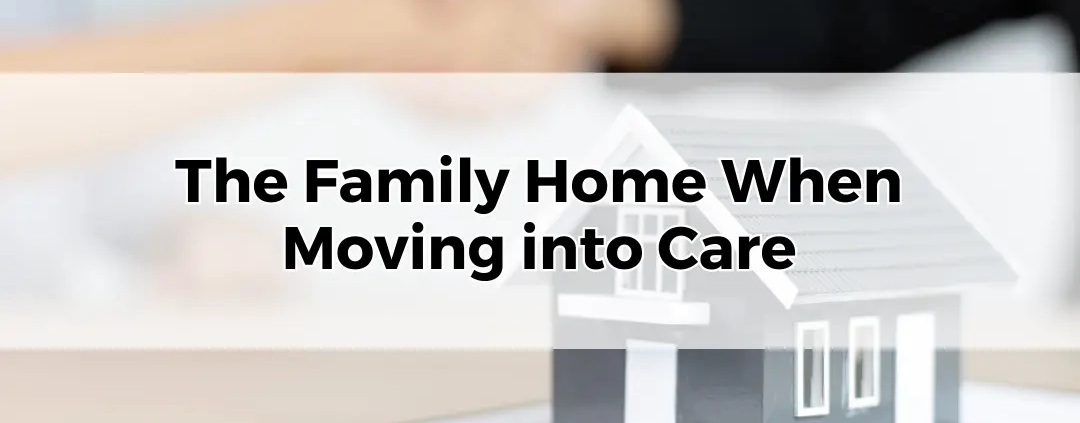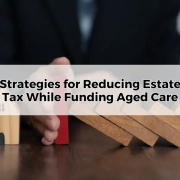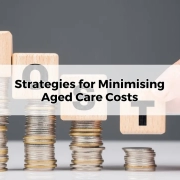The Family Home When Moving into Care
Table of Contents
ToggleThe family home, often the principal place of residence, holds both financial and emotional significance for many clients. As one of their largest assets, it plays a crucial role in determining eligibility for the age pension and liability for aged care fees. Therefore, deciding the fate of a former home is a major consideration for those transitioning into aged care. Concessional rules apply to the assessment of the family home, and these rules differ across Centrelink/DVA and aged care regulations. It’s imperative to consider each aspect separately, both at the date of entry into aged care and on an ongoing basis.
Defining the Family Home
A client’s home is generally defined as the dwelling they live in plus up to two hectares of land on the same title, provided the land is used for private purposes. Rural properties might capture a larger portion of land if certain conditions are met (the extended land test rules). Occasionally, the exemption may apply to a home on more than one title, but typically only if the land is adjacent and legal impediments prevent selling the blocks separately.
Moving into Residential Aged Care
When moving into residential aged care, two distinct sets of rules come into play regarding the home’s impact on Centrelink/Veterans’ Affairs (DVA) entitlements and aged care fee calculations:
- Centrelink/DVA: The two-year rule. The home is exempt if occupied by a spouse; otherwise, it is exempt for up to two years or until sold, whichever comes first. During this exemption period, the client is assessed as a homeowner.
- Aged Care: The protected person rule. The home is exempt if occupied by a protected person; otherwise, it is immediately assessed at up to the capped value.
Centrelink/DVA Assessment of the Home When Entering Care
The client’s home and homeowner status are reviewed on the day the client moves into care, which can be either residential aged care or community care (such as moving into a child’s home to receive care). This assessment is ongoing and subject to change with alterations in circumstances or the progression of time.
Defining a Care Situation
For Centrelink/DVA purposes, moving to a care situation isn’t limited to residential aged care. It can include receiving substantial care in a private residence or a long-term hospital stay. A substantial level of care is met if the person being cared for:
- Is over age pension age and frail,
- Has an ACAT approval and is awaiting permanent residential care,
- Has been accepted for respite care,
- Receives Disability Support Pension and requires help due to a medical condition,
- Has medical evidence of leaving home due to illness or hospital discharge,
- The carer receives Carer Allowance or Carer Payment or DVA Carer Pension.
Exemption – Ongoing or Two-Year Rule?
When moving into a care situation, the former home remains exempt for Centrelink/DVA purposes if:
- A current spouse continues to live in the home, keeping both members of the couple assessed as homeowners indefinitely.
- The two-year rule applies if no current spouse remains in the home. Homeownership status and exemption continue for only two years. After two years, the home is assessed at the net market value, and non-homeowner asset test thresholds apply, which may reduce or cancel the age/service pension.
Someone Else Stays in the Home
If a client lives with a sibling, cousin, or friend, the two-year rule applies unless a current spouse remains in the home. The definition of a protected person under aged care fee rules does not apply for Centrelink/DVA means-testing.
The Home is Empty
If the client lived alone and the home remains empty after they move into care, the two-year rule applies.
The Home is Rented
Renting the home might be preferable to leaving it empty, generating extra cash flow to help with aged care fees and for security reasons. Under the asset test, the two-year rule applies. The home is exempt for two years, and the client is assessed as a homeowner during that period. After two years, the home is assessed at the net market value and non-homeowner asset test thresholds apply. Under the income test, net rental income is immediately assessable, based on income and expenses in the tax return or assumed expenses if no tax return is available.
The Home is Sold
For a single person moving into care, the home exemption ceases once the home is sold. The client immediately becomes a non-homeowner, and net sale proceeds are assessable under the assets test, depending on their use. If a member of a couple, the homeownership status may continue if the proceeds are to be used for buying/building a new home for the partner not living in care. Sale proceeds allocated for a new home can be exempt for up to 24 months, with a possible 12-month extension for reasonable delays, while the clients remain homeowners during this period. The sale proceeds are assessed under deeming rules but at the lowest deeming rate.
Aged Care Fees – Assessment of the Home
Updated 19 March 2024
There is no overlap between the home assessment rules for Centrelink/DVA and aged care. The rules are distinctly different. The initial assessment of the home occurs on the day the client permanently moves into residential aged care. Circumstantial changes can impact this assessment.
One of Two Options: Exempt or Capped Value?
When moving into aged care, the home assessment for aged care fee purposes will be one of two types:
- Protected Person Lives in the Home: If a protected person, such as a spouse, lives in the home, it is an exempt asset while they continue to reside there and meet the protected person definition.
- Capped Value Applies: If no protected person lives in the home, it is assessed at up to a capped value (currently $201,231.20) for each member of the couple in care. If the net market value is less than this cap, the net market value is assessable.
Protected Person Exemptions
The home may be exempt for aged care means-testing if occupied by a protected person, such as a current spouse, dependent child, carer, or close family member, provided they meet specific conditions.
A Current Spouse or Dependent Child Stays in the Home
If a current spouse or dependent child remains in the home, it remains an exempt asset. The exemption continues until they move out or the dependent child ceases to be a dependent.
A Carer or Close Family Member Stays in the Home
If a carer or close family member qualifies as a protected person and continues to live in the home, it remains exempt. The exemption lasts until the protected person moves out or loses eligibility for an income support payment.
Definition of a Carer
A carer must have lived with the client for at least two years, provided substantial care, and be eligible for an income support payment at the client’s date of entry into care.
Definition of a Close Family Member
A close family member must have lived with the client for at least five years and be eligible for an income support payment at the client’s date of entry into care.
Income Support Payment
An income support payment includes Age Pension, Disability Support Pension, JobSeeker Payment, and other specified payments, but not Carer Allowance.
Assessing Changing Circumstances
The assessment of the home can change as the client’s circumstances evolve.
The Spouse Moves into Aged Care
If the second spouse moves into aged care, the two-year rule starts from that date. Both clients are assessed as homeowners and the home is an exempt asset for two years. After two years, they are assessed as non-homeowners, with the home assessed at net market value.
The Spouse Dies
The two-year rule applies from the date the spouse living at home dies. The surviving client is a homeowner for two years, after which they are assessed as a non-homeowner, with the home assessed at net market value.
The Spouse Downsizes the Home
If the spouse downsizes, the new home is assessed as the home for both members of the couple. If there are leftover funds from the changeover, their use determines their assessability.
The Spouse Moves in with the Kids
If the spouse moves in with the kids, the motivations behind the move determine the assessment. If moving for care, the two-year rule starts from that date. If temporary, the home remains exempt for the later of two years from the first client’s move or 12 months from the second client’s move.
The Spouse Moves into a Rental Property
If the spouse rents a new property, motivations behind the move determine the assessment. If temporary, the home remains exempt for the later of two years from the first client’s move or 12 months from the second client’s move.
The Spouse Moves into a Retirement Village
A move to a retirement village is generally not considered moving into a care situation. The assessment depends on the value of the entry contribution.
A Protected Person Loses Their Status
A protected person losing their status results in the home being assessed at up to the capped value.
By understanding these intricate rules and exemptions, clients can better navigate the financial and emotional complexities of transitioning into aged care.









